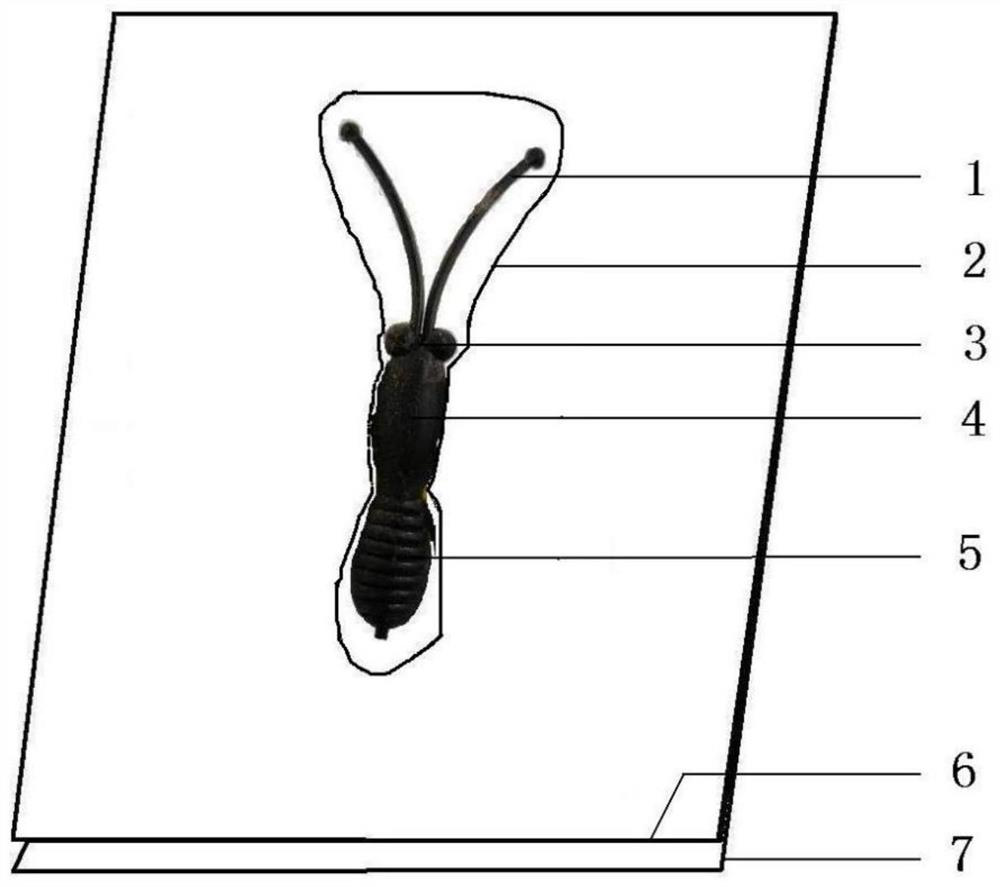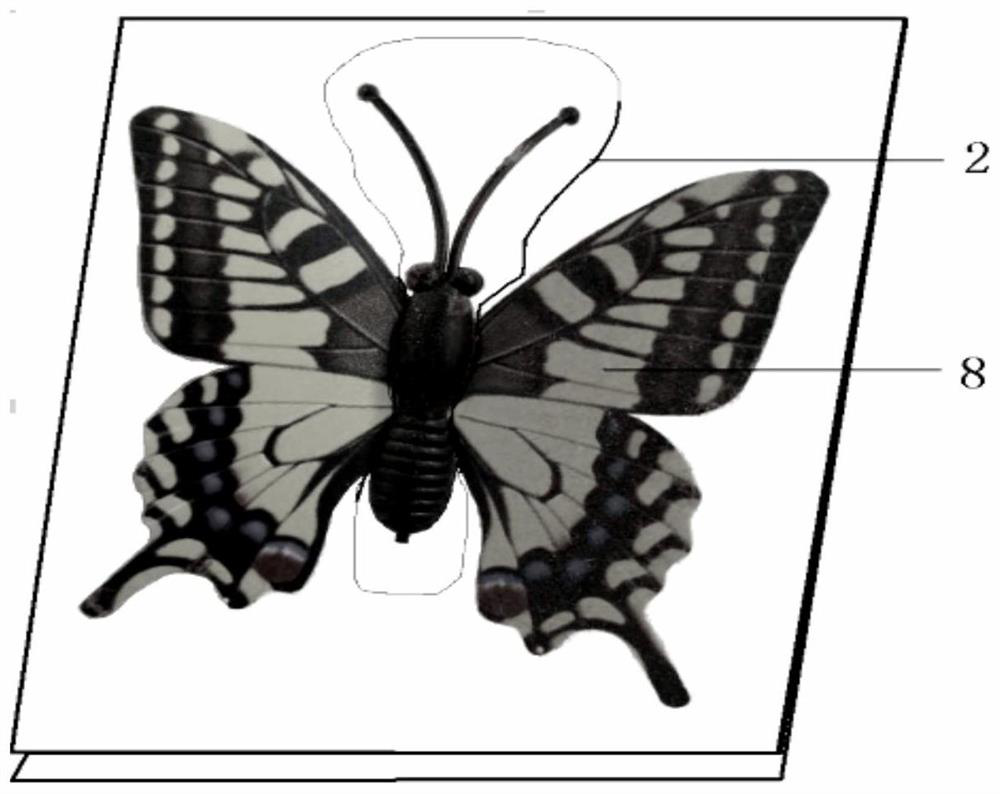Method for making resin-embedded specimens of Lepidoptera insects
A technology of Lepidoptera insects and production methods, applied in the field of insect taxonomy, can solve the problems of serious discoloration of specimens, detachment from specimens, discoloration of butterfly wings, etc.
- Summary
- Abstract
- Description
- Claims
- Application Information
AI Technical Summary
Problems solved by technology
Method used
Image
Examples
Embodiment Construction
[0015] The embodiments of the present invention will be described in detail below with reference to the drawings.
[0016] In the present invention, the wings of the lepidopteran insects are first molded, then cast and cured with resin, and finally made into resin-embedded specimens.
[0017] According to the size of the lepidopteran insect specimen, select the appropriate size plastic film.
[0018] figure 1 According to the size of the lepidopteran insect body (head 3, chest 4, belly 5 and antennae 1), cut off the two layers of plastic film on the body, that is, dig a hole in the same position of the upper plastic film 6 and the lower plastic film 7. In order to leave room for the lepidopteran body. Cut the upper plastic film 6 and the lower plastic film 7 along the plastic film cutting line 2 according to the size of the specimen. Discard the two layers of plastic film within the plastic film cutting line 2 and save the rest of the plastic film for the next step. 8 plastic packa...
PUM
 Login to View More
Login to View More Abstract
Description
Claims
Application Information
 Login to View More
Login to View More - R&D
- Intellectual Property
- Life Sciences
- Materials
- Tech Scout
- Unparalleled Data Quality
- Higher Quality Content
- 60% Fewer Hallucinations
Browse by: Latest US Patents, China's latest patents, Technical Efficacy Thesaurus, Application Domain, Technology Topic, Popular Technical Reports.
© 2025 PatSnap. All rights reserved.Legal|Privacy policy|Modern Slavery Act Transparency Statement|Sitemap|About US| Contact US: help@patsnap.com



